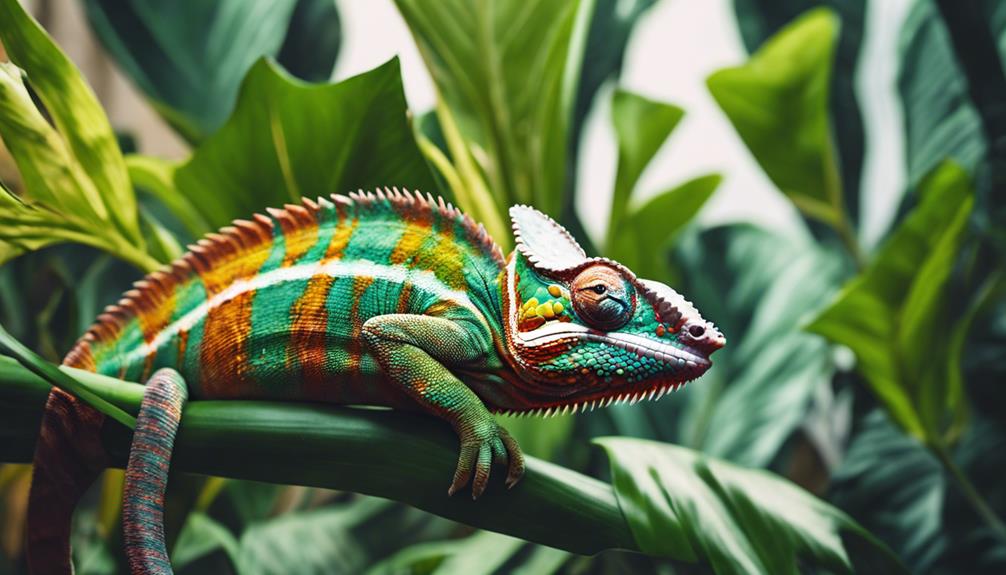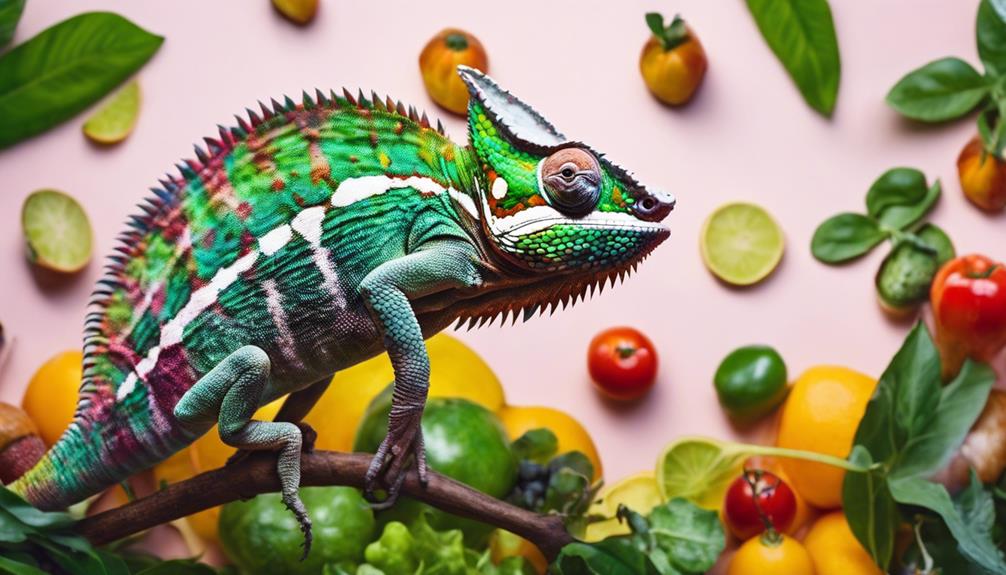When it comes to philodendrons and your chameleon’s safety, tread carefully. These lush green plants, while aesthetically pleasing, may harbor hidden dangers for your reptilian companion.
Understanding the potential risks and benefits of having philodendrons in your chameleon’s habitat is important for their well-being. Before making a decision, consider the implications of introducing these plants and how they can impact your chameleon’s environment.
No, Philodendrons are not safe for chameleons as they contain insoluble calcium oxalate crystals which can irritate if ingested. It’s important to choose plants for your chameleon’s enclosure that are non-toxic and safe for them to chew on.
Potential Risks of Philodendrons for Chameleons
When considering the safety of Philodendrons for chameleons, it’s essential to understand the potential risks associated with these plants.
Philodendrons contain insoluble calcium oxalate crystals, which can lead to mild irritation in a chameleon’s mouth and stomach if consumed excessively. While some fruits and vegetables also contain oxalates, moderate consumption of Philodendrons is generally considered safe for chameleons.
However, excessive ingestion of these plants may interfere with mineral absorption in chameleons, potentially resulting in health issues. Chameleons may initially ignore Philodendrons in their enclosures, but it’s crucial to monitor their interaction with these plants to prevent overconsumption.
To minimize the risk of health issues associated with ingesting Philodendrons, it’s advisable to avoid placing these plants in chameleon enclosures. Keeping a careful eye on your chameleon’s diet and environment can help maintain their well-being and prevent any potential complications from consuming Philodendrons.
Benefits of Having Philodendrons for Chameleons
Considering the potential risks associated with Philodendrons for chameleons, it’s important to acknowledge the various benefits these plants offer to enhance your pet’s environment and well-being.
Philodendrons provide a natural climbing structure, allowing chameleons to exercise their natural behaviors while exploring their habitat.
The dense foliage of Philodendrons creates ideal hiding spots and a sense of security for chameleons, effectively reducing stress levels commonly experienced in captivity.
Additionally, these plants help maintain ideal humidity levels within the chameleon’s enclosure, important for their overall health and well-being.
Chameleons may occasionally nibble on Philodendron leaves, enriching their diet with plant matter and natural nutrients. Offering Philodendrons in moderation helps prevent any potential digestive issues while enjoying the benefits they bring to your chameleon’s habitat.
- Provides a natural climbing structure
- Offers hiding spots and security
- Helps maintain humidity levels
- Enriches diet with natural nutrients
How Philodendrons Impact Chameleon Habitat
Philodendrons greatly impact the chameleon habitat due to their toxic nature, specifically stemming from insoluble calcium oxalate crystals present in their leaves. When chameleons come into contact with Philodendrons, there’s a risk of ingesting these toxic oxalates, leading to mild irritation in the mouth and stomach.
Although some fruits and vegetables contain similar oxalates, excessive consumption of Philodendrons may interfere with mineral absorption, posing health risks to chameleons. It’s important to confirm the safety of the plants within a chameleon’s cage, as their habitat directly influences their health and well-being.
Given the potential toxicity and associated health risks, it’s advisable to consult safe plant lists before introducing Philodendrons into a chameleon enclosure. By being mindful of the plants chosen for the chameleon’s habitat, you can help create a safe and nurturing environment that promotes their overall health and longevity.
Tips for Safely Introducing Philodendrons
Safely introducing Philodendrons to your chameleon’s habitat involves strategic placement and careful monitoring to prevent potential health risks. When incorporating these plants into your chameleon’s enclosure, consider the following tips:
- Guarantee Ingestion: Make sure Philodendrons are positioned out of the chameleon’s reach to avoid accidental consumption.
- Monitor Behavior: Regularly observe your chameleon’s interactions with Philodendrons to check for any signs of interest in consuming them.
- Provide Alternatives: Offer alternative safe plants for your chameleon to explore, diverting their attention from potentially toxic Philodendrons.
- Consult a Veterinarian: Seek guidance from a veterinarian or reptile specialist regarding safe plant options and the risks associated with Philodendrons in chameleon enclosures.
Monitoring Chameleon Behavior Around Philodendrons
When observing chameleons near Philodendrons, closely monitor their interactions to prevent potential ingestion of harmful substances. Philodendrons contain toxic calcium oxalate crystals that can lead to mild irritation in the mouth and stomach if chameleons nibble on their leaves.
These insoluble calcium oxalate crystals pose a risk to chameleons, particularly affecting mineral absorption with excessive consumption. Being cautious with philodendrons in chameleon habitats is crucial to avoid any potential harm.
Frequently Asked Questions
What Plants Are Safe for Chameleons?
When selecting plants for chameleons, prioritize their safety and health. Opt for Golden Pothos, Schefflera, and Hibiscus for a thriving habitat. Avoid toxic options like Philodendrons. Create a diverse environment with safe species, proper climbing plants, and enriching decor.
Are Philodendrons Safe for Pets?
Philodendrons offer a lush aesthetic to your space and can thrive indoors with proper care. Variegated types like Philodendron Birkin and Heartleaf are popular choices. Make sure well-draining soil, moderate watering, and indirect sunlight for best growth.
Are Pothos Toxic to Chameleons?
When considering Pothos’ care for chameleons, be mindful of Pothos’s toxicity. While chameleons enjoy a varied diet, excessive plant consumption can impact their health. Monitor their behavior and consider Pothos alternatives for a balanced chameleon habitat.
What Is Poisonous to Chameleons?
To guarantee the health of your chameleon, be cautious of common toxins like oxalates found in plants, maintain a balanced diet with safe supplements, prevent exposure to harmful insects and poisonous plants, and seek veterinary care for any concerns.
Conclusion
To sum up, philodendrons pose a significant risk to chameleons due to their toxicity when ingested. It’s important to prioritize the safety and well-being of your chameleon by choosing non-toxic plant options for their habitat.
Remember, a safe environment leads to a healthy and happy chameleon. So, when it comes to philodendrons and your chameleon’s health, it’s better to be safe than sorry.


